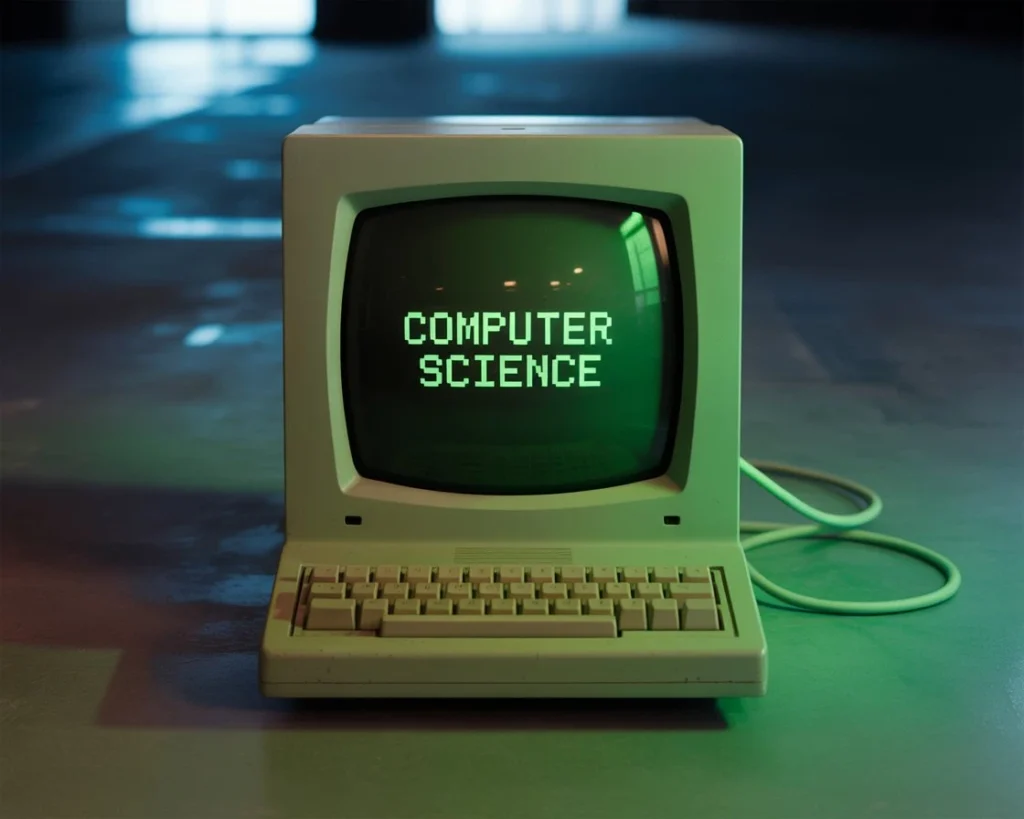Discover the lighter side of coding! Explore computer science LOL moments, funny lessons, and practical tips with humor and insight.
Computer Science LOL captures the playful spirit of tech culture.
It reflects the humor found in coding mishaps and quirky challenges.
Blending fun with serious topics makes programming less daunting.
Humor turns tough computer science lessons into memorable, enjoyable learning experiences that inspire curiosity and creativity.

The Origins of ‘LOL’ in Tech
Computer Science LOL is more than just a funny phrase—it’s part of tech culture that has been around for decades.
Before becoming a staple in coding forums and tech communities, LOL (Laugh Out Loud) first gained popularity in early online chatrooms during the late 1980s and 1990s.
Back then, internet users needed quick ways to show emotion while typing.
A simple “LOL” became the go-to expression to show laughter or amusement.
As online communities grew, this term spread into every corner of the digital world.
LOL in Tech Communities:
In coding forums, LOL evolved into more than just laughter—it became a way for developers to bond over common struggles.
From debugging nightmares to celebrating small coding wins, programmers used LOL to share humor and lighten the stress.
It soon became a universal language among tech enthusiasts.
Computer Science LoL as a Humor:
Programmers often joke about how small mistakes—like a missing semicolon—can crash entire systems.
Saying “computer science lol” reflects both the frustration and the humor behind such experiences.
Over time, this expression became a symbol of resilience, reminding everyone to laugh, learn, and keep coding.

Why Humor is Essential in Computer Science
Computer Science LOL moments show us that humor is not just fun—it’s powerful.
Coding can be intense, and a little laughter can make the process smoother and more enjoyable.
Humor is like a stress-busting tool that every programmer needs.
Reducing Stress During Debugging
Debugging is often the most frustrating part of coding.
A single bug can take hours to find, leaving developers mentally drained.
Cracking a joke or sharing a funny meme can ease the tension and reset the mind.
When stress levels drop, problem-solving becomes faster and more effective.
Fostering Creativity and Collaboration
Humor builds a friendly environment in coding teams.
When teammates laugh together, communication feels easier, and ideas flow more freely.
Creative solutions often come from a relaxed mind, and humor naturally sparks that mindset.
In collaborative projects, jokes and shared laughter make people feel connected, boosting team spirit and productivity.
Humor doesn’t just make coding fun—it also fuels innovation.
A light-hearted approach to challenges encourages programmers to think differently, experiment, and find smarter solutions.
In the world of computer science, a good laugh can be the secret ingredient to success.
Funny Coding Moments That Make Us Say LOL:
Computer Science LOL moments happen when coding errors turn into something unexpectedly hilarious.
Every programmer, whether a beginner or a pro, has experienced those times when a small mistake leads to a laugh-out-loud situation.
These moments not only lighten the mood but also make coding more memorable.
Real-Life Examples of Hilarious Coding Mistakes
One of the most common funny errors is the semicolon disaster.
A missing semicolon can break an entire program, leaving developers scratching their heads for hours.
When they finally spot the issue, the reaction is often, “LOL, was that it?”
Another classic moment is the infinite loop.
Imagine running code that never stops because you forgot to add a simple condition.
Suddenly, your computer is frozen, and all you can do is laugh at the chaos.
Memes and Jokes Popular Among Developers
Developer humor thrives on these mistakes.
Memes about “It works on my machine” or “I don’t always test my code, but when I do, I test in production” are legendary.
These jokes reflect real-life struggles that every programmer relates to, making the coding journey both funny and rewarding.In the end, these LOL moments remind us that mistakes are part of learning—and laughing makes them easier to handle.
Computer Science Lessons We Can Laugh At
Computer Science LOL moments often turn boring lessons into fun, unforgettable experiences.
Complex topics like algorithms, loops, and data structures can feel overwhelming.
But when humor steps in, learning becomes lighter, engaging, and easier to grasp.

Using Humor to Teach Tough Topics
Teaching algorithms with jokes or real-life funny examples makes the subject less intimidating.
For instance, comparing a sorting algorithm to kids lining up for candy instantly makes the concept relatable and entertaining.
Similarly, loops can be explained using hilarious everyday situations, like someone endlessly checking the fridge hoping new snacks appear.
This kind of humor turns frustration into curiosity, encouraging students to think differently.
Why Storytelling and Jokes Work
Storytelling is a powerful tool in computer science lol lessons.
When a teacher shares a funny story about a coding mistake, students remember it far better than dry textbook examples.
Humor keeps the mind active, making abstract concepts stick like glue.
A single well-timed joke can transform a dull session into a memorable one.
By blending humor with education, tough coding lessons become less about memorization and more about genuine understanding.
Laughing while learning not only makes computer science enjoyable but also sparks creativity and confidence in students.
Multiplication in Coding: A Simple Concept with Funny Mistakes
Computer Science LOL moments often appear when something as simple as multiplication creates unexpected chaos in a program.
In coding, multiplication is everywhere—whether it’s calculating image dimensions, running loops, or processing data.
Yet, even this basic math operation can lead to hilarious errors when misused.
How Multiplication is Applied in Programming
Multiplication is essential in graphics programming, like resizing images or scaling animations.
It’s also crucial in data analysis for computing values such as totals, averages, or percentages.
For example, multiplying screen resolution factors helps video games display smooth visuals.
Programmers often rely on this simple concept to make big things happen in software and apps.
Funny Examples of Wrong Calculations
Mistakes with multiplication can create truly laughable outcomes in computer science lol.
Imagine a game character suddenly growing ten times its size because someone accidentally multiplied by 100 instead of 10.
Or a shopping cart in an e-commerce app showing a $10 item as $1,000 due to a misplaced decimal point.
These silly but real coding errors remind developers that even small mistakes can have big, funny consequences.
In the world of programming, multiplication is powerful—but one wrong calculation, and it’s an instant LOL moment!
Nodjs: Modern Development with a Smile
Computer Science LOL moments often shine when developers dive into Nodjs, a powerful tool for building fast and scalable web applications.
Nodjs has become a favorite among programmers because it allows them to use JavaScript for both the front-end and back-end, making development smooth and efficient.
A Simple Intro to Nodjs
Nodjs is a runtime environment built on Chrome’s V8 JavaScript engine.
It’s known for its speed, lightweight structure, and ability to handle multiple tasks without slowing down.
Developers love Nodjs because it’s perfect for creating real-time apps like chat platforms, streaming services, and online games.
Its flexibility and massive community support make it an essential tool for modern web development.
LOL Moments Developers Face with Nodjs
Learning Nodjs often comes with unexpected bugs that leave developers both confused and amused in computer science lol.
Imagine typing a simple code and watching the console spit out hundreds of error messages that make no sense—LOL moments every beginner knows too well.
Funny console logs, like accidentally printing an entire database of emojis instead of text, often turn frustration into laughter.
Nodjs proves that even while solving serious problems, coding can still be lighthearted and full of humor.
The Social Side of Computer Science LOL
Computer Science LOL moments aren’t just personal—they’re shared across vibrant online communities where developers connect through humor.
From hilarious memes to inside jokes about debugging, these communities create a space where laughter and learning go hand in hand.
Platforms like Reddit, Stack Overflow, and Discord are hotspots for developer conversations.
Programmers post funny screenshots of error messages, unexpected bugs, or sarcastic “solutions” to common problems.
On Stack Overflow, even serious coding questions sometimes receive witty replies that make readers chuckle while solving issues.
Discord servers dedicated to coding often have entire channels for memes and jokes, giving developers a break from intense discussions.
The Role of Memes in Developer Culture
Memes have become a universal language among developers.
Whether it’s a joke about missing semicolons, infinite loops, or “it works on my machine,” memes capture shared struggles perfectly.
They turn frustrating coding moments into something relatable and funny.
This humor builds camaraderie, helping developers feel connected even when working alone.
The social side of computer science proves that humor is more than entertainment—it’s a bonding tool that keeps the coding community alive and thriving.
How Humor Can Improve Your Coding Skills
Computer Science LOL moments teach us that laughter can be a powerful tool for learning.
Coding is full of challenges, but humor transforms mistakes into opportunities rather than roadblocks.
When you laugh at an error instead of stressing about it, you create space for better focus and problem-solving.
Laughing at Mistakes
Mistakes in coding are inevitable, especially when working on complex projects.
A missing bracket or a misplaced semicolon can trigger endless error messages.
Instead of feeling frustrated, laughing at these small blunders makes the learning process less intimidating.
This relaxed mindset allows you to approach debugging with creativity and patience.
Tips for Keeping a Positive Mindset
To maintain positivity while coding, remind yourself that every error is part of the learning curve.
Celebrate small wins, like fixing a stubborn bug or successfully running a test.
Surround yourself with developer humor, memes, or light-hearted coding stories to ease tension.
Taking short breaks, sharing jokes with teammates, and revisiting problems with a fresh mind all boost efficiency.
By mixing humor with persistence, you’ll not only improve your coding skills but also enjoy the journey of learning and creating.
Tips for Beginners: Starting Computer Science with Fun
Computer Science LOL moments are perfect for beginners who want to learn coding without feeling overwhelmed.
Starting with a fun approach makes tough concepts easier to understand and keeps motivation high.
When learning feels like play, even complex topics become less intimidating.
Use Fun, Interactive Tools
There are plenty of interactive platforms like Scratch, Code.org, and Khan Academy that make coding enjoyable.
These tools turn coding into a game, teaching basics like loops and conditions through colorful visuals and simple challenges.
Instead of dry theory, beginners can practice real coding while having fun.
This approach builds confidence and helps learners stay consistent.
Explore Playful Projects
Playful projects are a great way to spark creativity while learning computer science lessons.
Try building simple games, fun calculators, or even meme generators that make friends laugh.
These small projects provide hands-on experience and help learners see how coding works in real life.
Every successful project, no matter how small, gives a sense of achievement.
By mixing creativity with interactive learning, beginners can enjoy their coding journey and build a strong foundation without stress.
Computer Science LOL in Pop Culture
Computer Science LOL moments have made their way into pop culture, blending humor with the often complex world of technology.
Movies, TV shows, and social media trends frequently highlight the funny side of coding and the quirks of tech life.
These references make programming relatable, even for those who don’t code.
References in Movies, Series, and Social Media
Films like The Internship or The Social Network include witty coding jokes and lighthearted takes on the tech world.
TV shows such as Silicon Valley are packed with hilarious moments that poke fun at developers’ struggles.
On social media, platforms like Instagram, Reddit, and TikTok overflow with memes about debugging, infinite loops, and the classic “it worked yesterday” dilemma.
Popular Shows and Channels Mixing Humor with Tech
YouTube channels like Joma Tech and The Coding Train blend humor with coding tutorials, making tech education both fun and informative.
Podcasts and web series often share relatable stories about developer fails and coding challenges, turning learning into entertainment.
Pop culture proves that tech isn’t just serious business—it’s full of laughable moments that both inspire and entertain audiences worldwide.
- 1. Why do programmers say LOL in coding?
- Programmers use LOL to laugh at coding mistakes, unexpected bugs, or funny error messages.
It’s a way to lighten the mood during stressful debugging sessions. - 2. Can humor really help in learning computer science lessons?
- Yes! Humor reduces stress and makes tough topics like algorithms or loops easier to remember.
A funny example or joke can make complex concepts more engaging. - 3. What are the funniest programming languages or tools?
- Languages like Whitespace or LOLCODE are intentionally designed to be humorous.
Tools with playful error messages or Easter eggs also bring laughter to coding sessions. - 4. Do coding communities share jokes and memes?
- Absolutely! Platforms like Reddit, Stack Overflow, and Discord are filled with developer memes, funny error screenshots, and coding humor that everyone can relate to.
- 5. How do LOL moments improve coding skills?
- Laughing at mistakes reduces frustration and helps programmers think more creatively.
A relaxed mindset often leads to better problem-solving and learning.
Conclusion: Laugh, Learn, and Code
Computer Science LOL moments have taught me that laughter turns frustration into progress.
I still remember breaking my code with a single missing semicolon and laughing at the chaos before fixing it.
Humor makes tough lessons easier to handle and sparks creativity.
I believe learning to code is not just about logic—it’s about enjoying the journey with a smile.
- 1 The Origins of ‘LOL’ in Tech
- 1.1 LOL in Tech Communities:
- 1.2
- 1.3 Why Humor is Essential in Computer Science
- 1.4 Funny Coding Moments That Make Us Say LOL:
- 1.5 Computer Science Lessons We Can Laugh At
- 1.6 Multiplication in Coding: A Simple Concept with Funny Mistakes
- 1.7 Nodjs: Modern Development with a Smile
- 1.8 The Social Side of Computer Science LOL
- 1.9 How Humor Can Improve Your Coding Skills
- 1.10 Tips for Beginners: Starting Computer Science with Fun
- 1.11
- 1.12 Computer Science LOL in Pop Culture
- 1.13
- 1.14 Conclusion: Laugh, Learn, and Code

One Comment